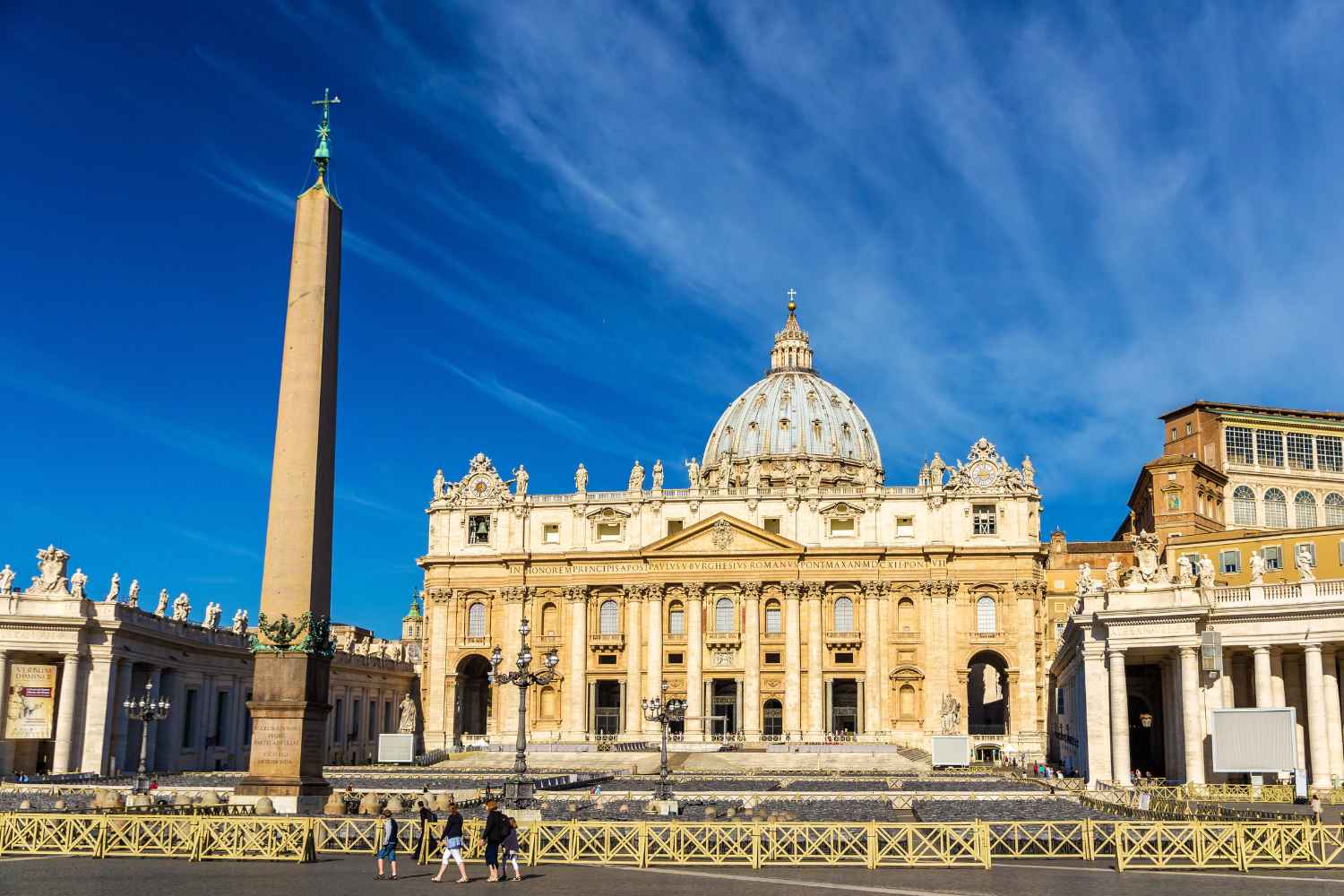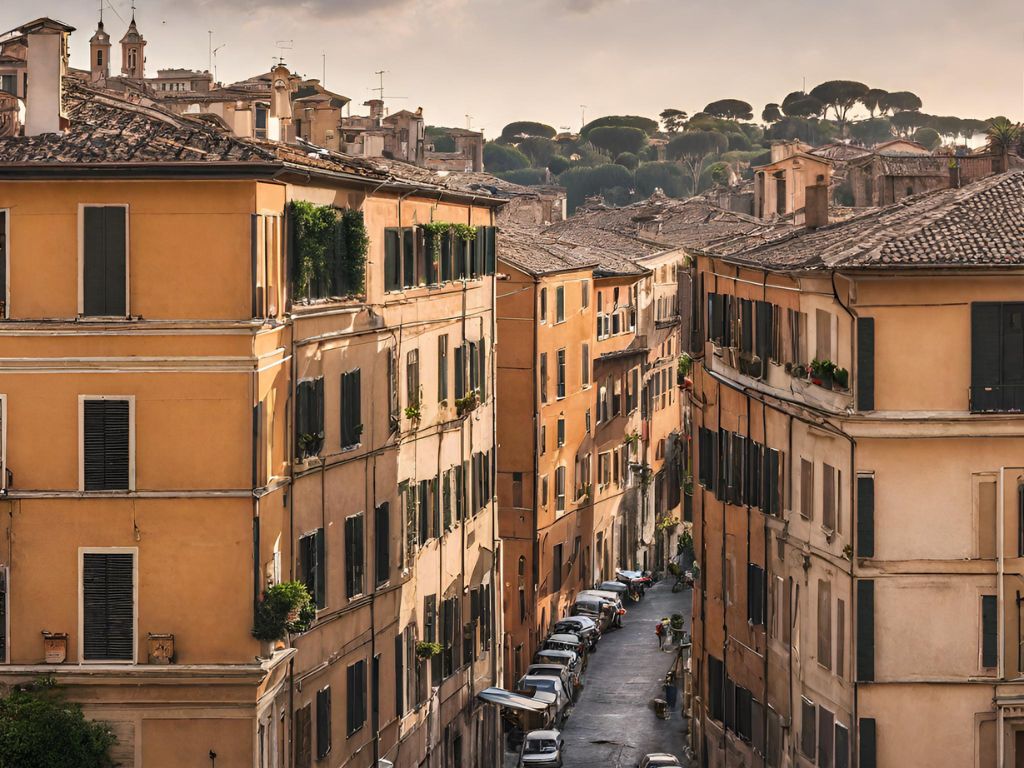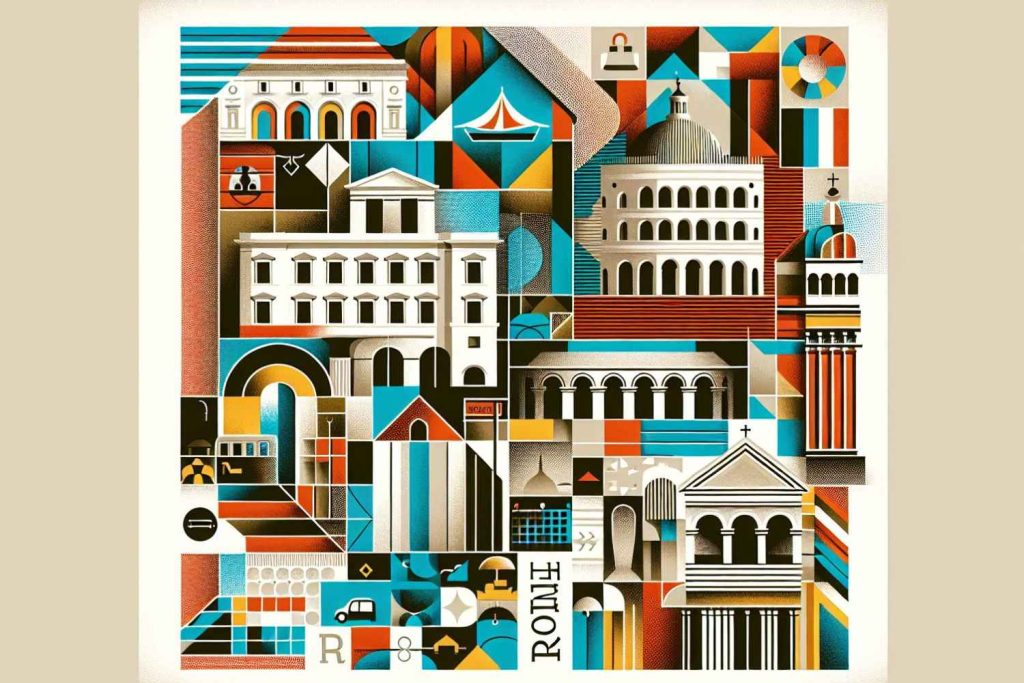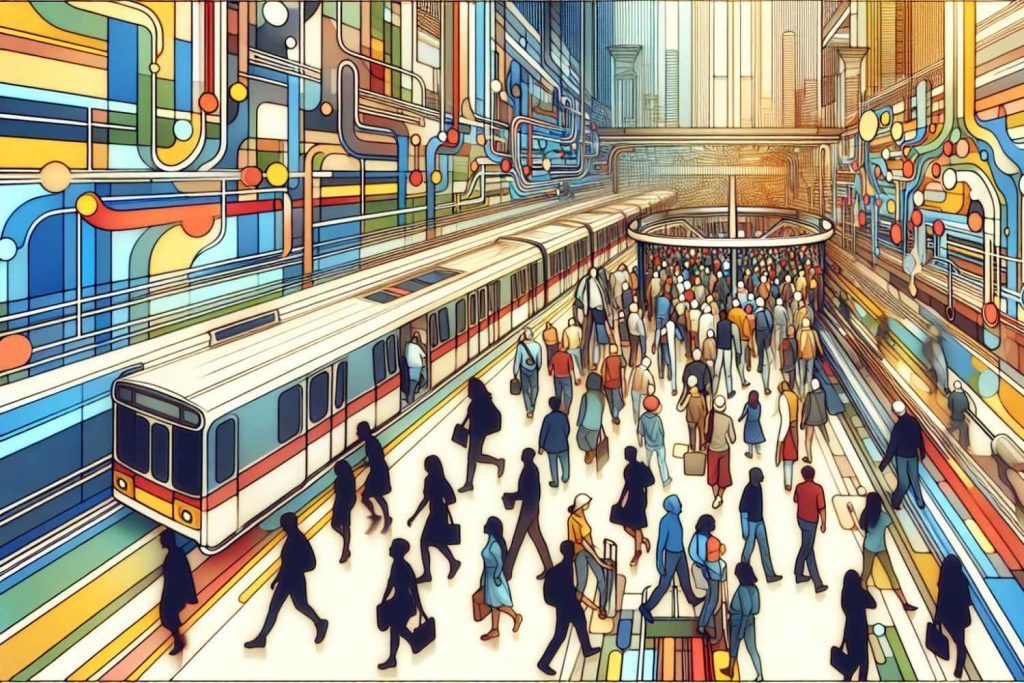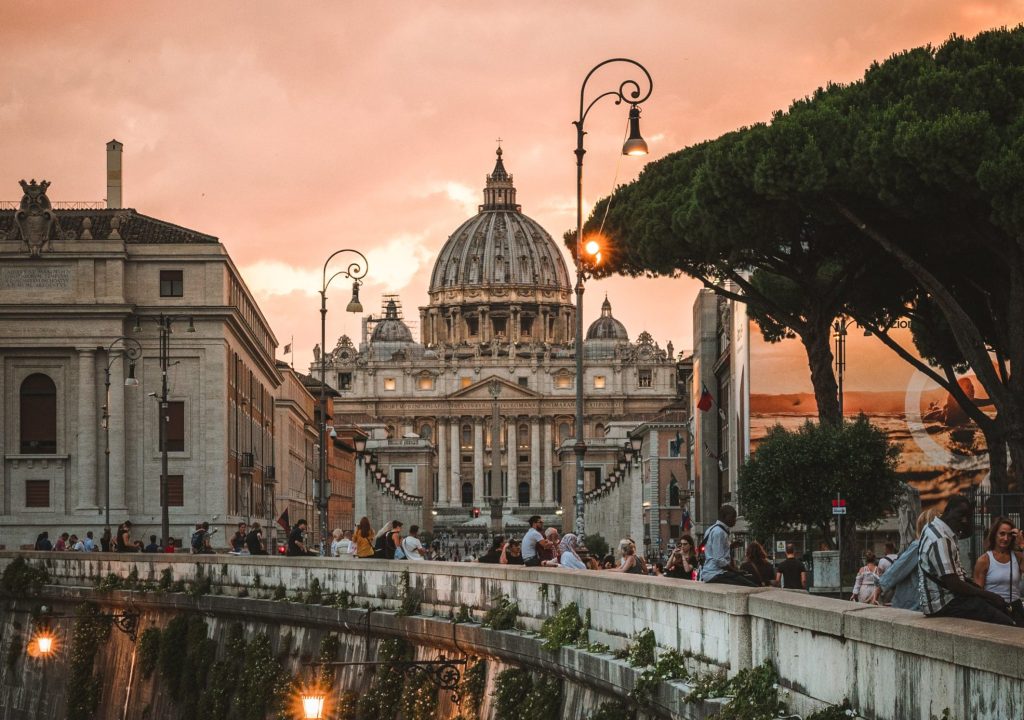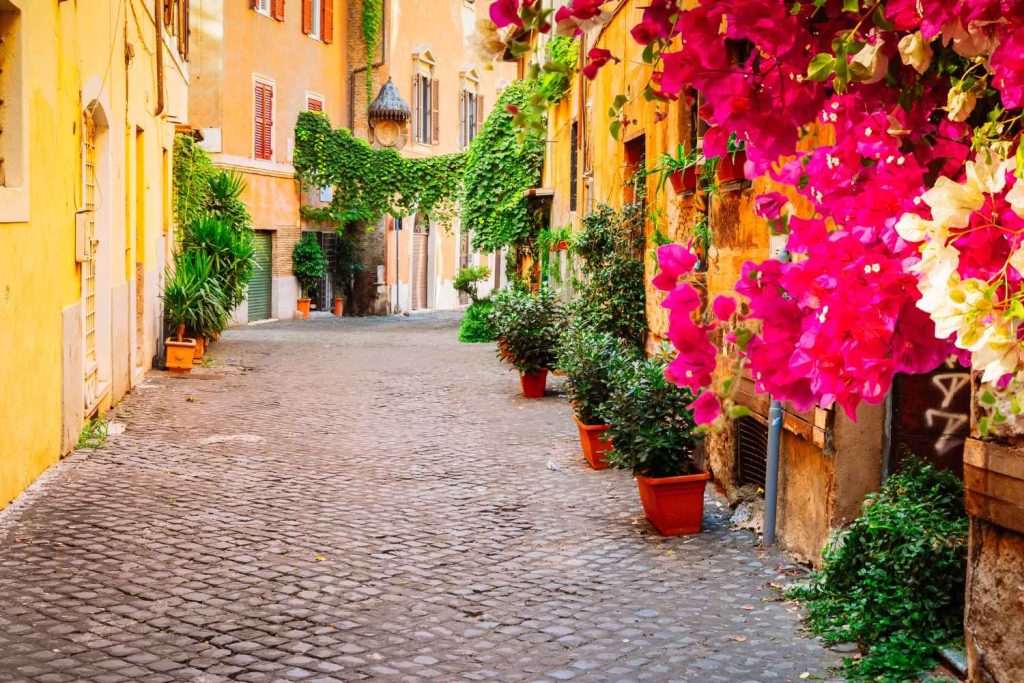Get insider tips for visiting St. Peter’s Basilica in Rome. Explore the Vatican’s crown jewel and uncover its hidden gems
In the heart of Rome is a place that stands as a testament to the enduring power and influence of the Catholic Church. St. Peter’s Basilica, a masterpiece of Renaissance architecture, is a site of both religious significance and architectural grandeur. Let us embark on a journey to discover the captivating charm of this iconic basilica. The Basilica is housed within the famous Vatican city. Check out our Vatican City overview to get a sense of how St. Peter’s fits into the geography and history of the city.
Historical Significance
The history of St. Peter’s Basilica is intertwined with that of Christianity itself. Located in Vatican City, the world’s smallest independent state, the basilica is named after Saint Peter, one of the twelve apostles of Jesus Christ and considered by Catholics to be the first pope. Legend has it that Saint Peter was crucified upside down in the first century AD, and this sacred site is said to be the final resting place of his remains.
The original St. Peter’s Basilica was constructed on this spot in the fourth century by Emperor Constantine, but it wasn’t until the Renaissance that the basilica took its present form. Pope Julius II commissioned the construction of the current basilica in the early 16th century, enlisting the talents of renowned architects such as Bramante, Michelangelo, and Bernini. Their collective vision and artistic brilliance would transform St. Peter’s into the awe-inspiring edifice we see today.
Architectural Marvel
As you approach St. Peter’s Basilica, the sheer scale of the structure becomes immediately apparent. The façade, with its colossal Corinthian columns and statues of Christ, John the Baptist, and eleven of the apostles, leaves a profound impression on all who behold it. The façade is flanked by two majestic bell towers, a remarkable feat of architectural harmony.
Stepping inside, one is greeted by the vastness of the basilica’s interior. The soaring dome, designed by Michelangelo, is a masterpiece of engineering and aesthetics. Its grandeur is unmatched, and the oculus at its centre allows a cascade of divine light to pour in, creating a heavenly atmosphere within the basilica.
The interior is lavishly decorated with precious materials such as marble, stucco, and gold. The walls are adorned with numerous works of art, including Michelangelo’s Pieta, which depicts the Virgin Mary cradling the lifeless body of Jesus. This iconic sculpture exemplifies the Renaissance’s pursuit of perfection in form and emotion.
The history behind the allure of St. Peter’s Basilica
The Baldacchino and the Nave
One of the most striking features of St. Peter’s Basilica is the Baldacchino, an enormous bronze canopy that stands over the high altar. Designed by Gian Lorenzo Bernini, the Baldacchino is a testament to Baroque artistry and craftsmanship. Its twisted columns and intricate details are nothing short of mesmerising.
The nave of the basilica is an imposing space, flanked by rows of colossal statues of saints and apostles. The design of the nave draws the eye towards the high altar and the majestic dome above, creating a sense of spiritual ascent.
The Papal Altar and Confession
The Papal Altar, situated directly beneath the Baldacchino, is the focal point of St. Peter’s Basilica. This is where the Pope presides over liturgical ceremonies and where countless pilgrims come to receive the sacraments. Beneath the Papal Altar lies the Confession, a space believed to be directly above the tomb of Saint Peter. Pilgrims often gather here to offer their prayers and seek solace in the presence of the apostle’s remains.
Chapels and Niche Altars
St. Peter’s Basilica is not just a single space but a labyrinthine wonder of chapels and niche altars, each dedicated to a different saint or aspect of Christian faith. The Chapel of the Madonna of Column, for instance, houses a revered 15th-century image of the Virgin Mary. Meanwhile, the Chapel of the Holy Sacrament showcases Bernini’s masterful work in transforming marble into ethereal drapery.
As you explore these various chapels and alcoves, you will encounter a treasure trove of artistic and religious marvels. The spectacular Vatican Museums are well worth a visit. We have various tours on offer that take in both the Vatican and the Vatican Museums. From mosaic-covered domes to intricate frescoes, each corner of the basilica offers a unique experience.
The Vatican Grottoes
Beneath the basilica lies another hidden world, the Vatican Grottoes. This subterranean complex houses the tombs of numerous popes, including the recently canonised Pope John Paul II and Pope John XXIII. Pilgrims and history enthusiasts alike can explore this sacred space to gain a deeper understanding of the Church’s past and its spiritual legacy.
The Dome and the Dome Climb
One of the most remarkable features of St. Peter’s Basilica is the dome, designed by Michelangelo. The ascent to the top of the dome provides a panoramic view of the Vatican City and the sprawling city of Rome beyond. The climb itself is an experience, with a narrow spiral staircase leading to the summit. The reward, however, is a breathtaking vista that spans the Tiber River, the Roman Forum, and the Colosseum.
Papal Audiences and Masses
St. Peter’s Basilica is not merely a tourist attraction; it is the spiritual centre of the Catholic Church. For those fortunate enough to visit during a papal audience or Mass, the experience can be deeply moving. The faithful gather in the vast square outside the basilica, awaiting the Pope’s address or participating in the solemnity of the Mass. Witnessing the Pope’s presence in this historic setting is a profound and unforgettable experience.
Visiting Tips
Before you embark on your journey to St. Peter’s Basilica, here are a few practical tips to enhance your visit:
Dress Modestly: As a place of worship, visitors are expected to dress modestly. Avoid wearing sleeveless tops, short skirts, or shorts. It’s advisable to carry a scarf or shawl to cover your shoulders if needed.
Security Checks: Be prepared for security checks when entering the basilica. This includes bag inspections and metal detectors.
Guided Tours: Consider joining a guided tour to gain a deeper understanding of the basilica’s history and significance. Knowledgeable guides can provide valuable insights and take you to hidden gems within the complex.
Timing: St. Peter’s Basilica can get crowded, especially during peak tourist seasons. To avoid long queues, try to visit early in the morning or late in the afternoon.
Respectful Behaviour: Remember that St. Peter’s Basilica is a place of worship. Maintain a respectful demeanour, refrain from loud conversations, and turn off your mobile phone or put it on silent mode.
Photography: While photography is allowed, be mindful of the signs indicating restricted areas. Flash photography is typically not permitted inside the basilica.
Looking for restaurants near St. Peter’s Basilica? Here are some suggestions curated by Tripadvisor
St. Peter’s Basilica stands as a testament to the enduring power of faith and the boundless creativity of human architecture and artistry. This iconic basilica is not merely a structure; it is a living testament to centuries of history and devotion.
From the grandeur of its façade to the heavenly beauty of its dome, from the solemnity of the Papal Altar to the intimacy of the Vatican Grottoes, St. Peter’s Basilica invites visitors to explore its profound spiritual and artistic treasures. It is a place where history, religion, and art converge to create an experience that transcends time and leaves an indelible mark on all who enter its hallowed halls.
As you stand before the magnificent St. Peter’s Basilica, you are not just witnessing an architectural marvel; you are immersing yourself in a journey through the ages, a journey that takes you from the humble beginnings of Christianity to the grandeur of the Renaissance and beyond. It is a journey that will forever resonate in your heart and mind, an experience that will stay with you long after you leave the eternal city of Rome.
This article is part of our series on Vatican City. Explore all the attractions of this fascinating City at the heart of Europe. It’s truly a must-visit if you’re a visitor to Rome.
More articles you might like...
You can find more great Rome content in the following categories;
All about Vatican City Commonly Asked Rome Questions Rome Accommodation Rome Food and Drink Rome History and Culture Rome Neighbourhoods Rome Tours and Must-See Attractions Rome's Top Tours
